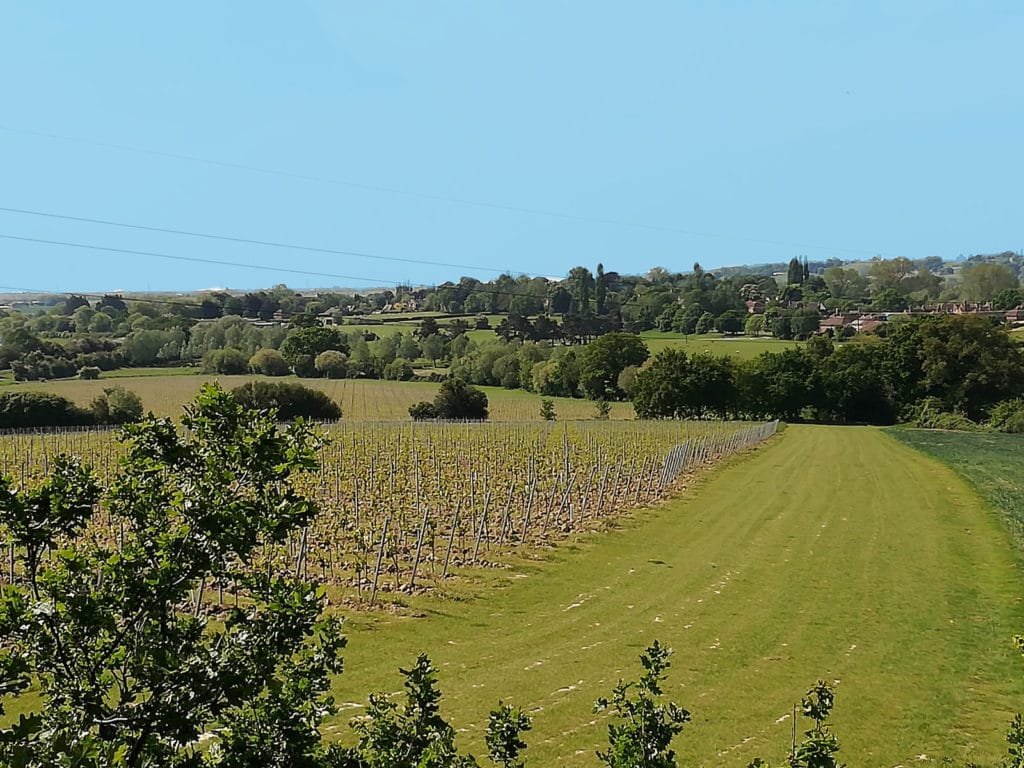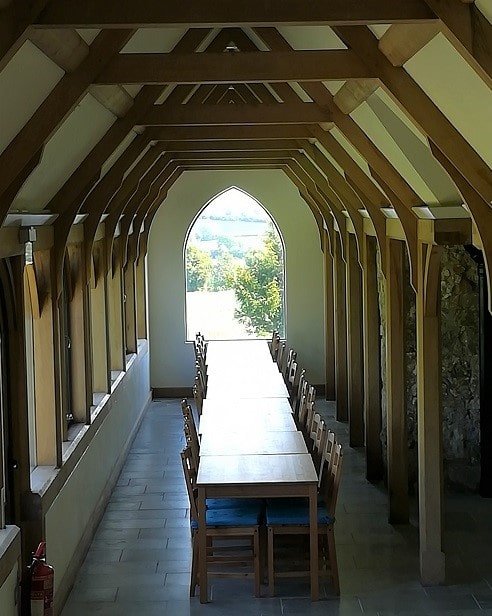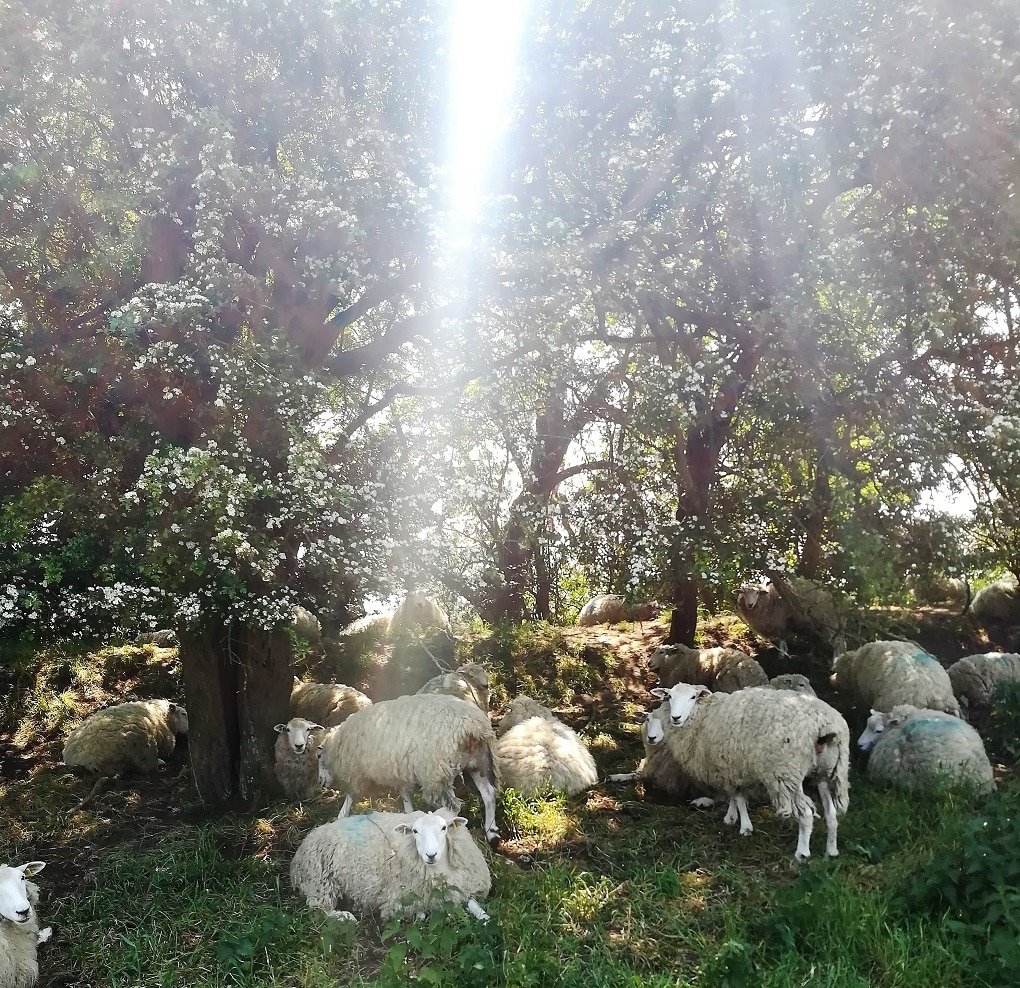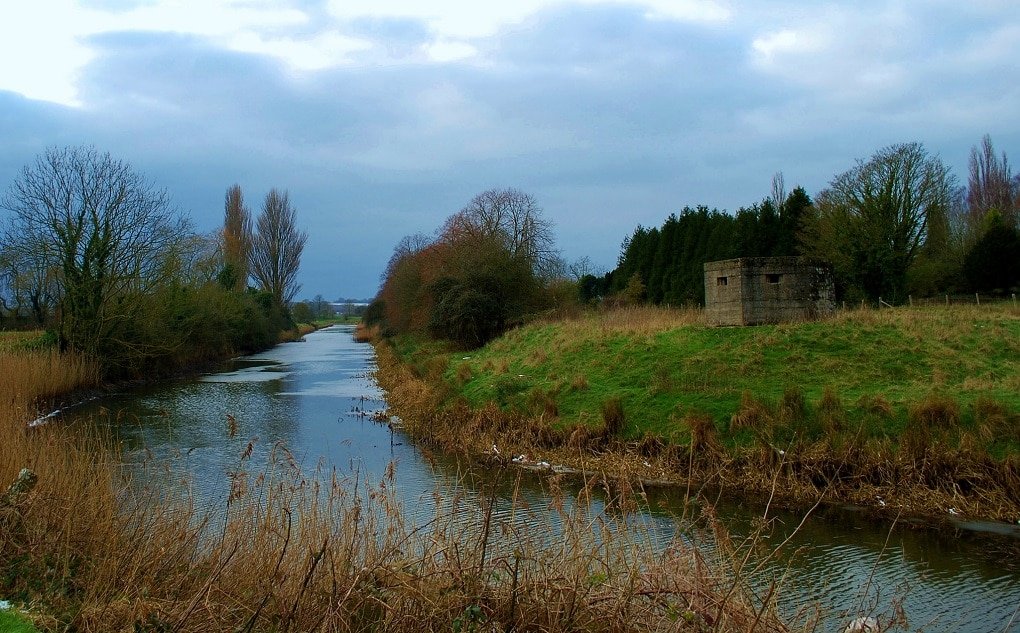
The village of Appledore lies on the edge of Kent’s Romney Marsh, not far from the East Sussex border. It may be small, (population approximately 750), but it is one of those delightful English villages surrounded by idyllic countryside. If you’re in the area, consider stopping here. Visit the local teashop or stretch your legs with the walk detailed below.
Appledore
If parts of Appledore look familiar, that’s because the village was often featured in popular TV show, “The Darling Buds of May”. It also provides the setting for “The Knight Whose Armour Didn’t Squeak” by beloved children’s author and Kent resident A.A. Milne.
Although pastures now surround the area, this was once a port at the estuary of the Rother. The river changed its course suddenly in the 13th century, and Appledore lost much of its trade. It now stands along the northern part of the Royal Military Canal, built to protect against possible invasion by Napoleon in the early 18th century.
A Walk in the Country

This five-mile circular walk, beginning and ending in Appledore, is courtesy of Explore Kent. Detailed directions are available at their website. The walk is not particularly strenuous but, as always, be sure to wear comfortable shoes.
We set out from the village hall mid-morning. After crossing the sportsfield and a few smaller fields, we soon found ourselves among the beautiful Gusbourne vineyards. The Gusbourne estate has a long history here, dating back to 1410. In 2010, the first wines from Gusbourne were released. Since then, the estate’s products have won multiple accolades. Sadly, we were just passing through and did not have the opportunity to participate in any tastings. We did see lots of signs of activity though, as workers tended the vines. Do remember that this is a working vineyard, so stay to the footpaths.


From fields of grapevines, we progressed through fields of beans and eventually reached a road which we followed for a while. At this point, we got a little confused with the directions and realized that we had missed one of the walk’s highlighted landmarks. We backtracked across some fields and made our way to St Mary’s at Kenardington. As an upcoming post will discuss, this part of Kent and the Romney Marsh are dotted with small rural churches, some no longer in use, others carefully restored. We ventured inside the church and enjoyed the cool air.
As luck would have it, an elderly couple entered the church with a friend who lived locally. He was able to tell us more about the church. More specifically, he opened a side door, revealing a wonderful new addition – an area where annual harvest dinners were still held, and some stunning stained glass windows.
From here, we rejoined the walking route, past a few houses and then down by the Royal Military Canal. We followed the path along the canal, past grazing sheep and to the noisy accompaniment of bullfrogs, until we arrived back in Appledore.

Getting to Appledore
The village of Appledore stands about 12 miles south of Ashford. If travelling by car, take the A2070 from Ashford or the A259 from Hastings. Then turn onto the B2080 at Brenzett. Trains run between Ashford International and Hastings, stopping at Appledore Station. The station is about 1.5 miles from the actual village. Local buses run between Appledore and Tenterden, New Romney, and Tunbridge Wells.
The nearest hotels are about 6 miles away in Rye. There are a few Bed and Breakfasts in the village and campsites nearby.
For dining, the Black Lion pub and restaurant offers a fairly extensive menu for both lunch and dinner. Miss Mollett’s High Class Tea Room has cream teas and some delicious sandwiches.



